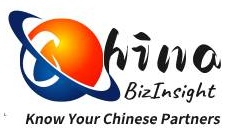Why Hong Kong Supplier Ownership Verification Matters More Than Ever
Global supply chains face unprecedented scrutiny. Regulatory bodies worldwide demand transparency, with non-compliance triggering severe penalties:
- EU’s CSDDD mandates UBO (Ultimate Beneficial Owner) identification by 2027
- US Uyghur Forced Labor Act requires traceability to ownership level
- UK Economic Crime Act 2022 imposes unlimited fines for opacity
Hong Kong remains a critical trade hub – but complex nominee arrangements and layered entities can mask high-risk UBOs. This guide delivers actionable steps to pierce the corporate veil.
Phase 1: Basic Verification – Confirming Legitimacy
Step 1: Retrieve Core Registration Documents
Access the Hong Kong Companies Registry (CR) portal:
- Search by company name/registration number: www.cr.gov.hk/en/home/
- Download:
- Certificate of Incorporation (confirms legal existence)
- Business Registration Certificate (validates tax status)
- Annual Return (NAR1) (lists current directors/shareholders)
Critical Check:
Verify document watermarks and issuance dates. Counterfeits often lack holograms or show inconsistent numbering.
Step 2: Director/Shareholder Analysis
Cross-reference NAR1 data with:
- Director’s Index (past/present roles in other entities)
- Shareholding Patterns (sudden transfers before contracts)
Red Flag: Directors holding 10+ positions may indicate nominee fronts.
Phase 2: Ownership Structure Investigation
Step 3: Uncover Nominee Arrangements
Hong Kong’s Companies Ordinance (Cap. 622) Section 691 compels disclosure of nominee relationships:
“Shares that an associate of the offeror, or a nominee on the offeror’s behalf, holds […] are not to be regarded as shares to which that offer relates”
Actionable Tactics:
- Statutory Declaration Scrutiny: Demand signed disclosures under S691 for shares held by nominees
- Control Tracing: Follow voting rights beyond registered shareholders using:
- Shareholder agreements
- Loan covenants with conversion rights
- Proxy voting patterns
Step 4: Identify Ultimate Beneficial Owners (UBOs)
Apply a 3-Layer Verification Framework:
- Direct Ownership (>25% shareholdings)
- Indirect Control (e.g., Family trusts holding shares via BVI entities)
- De Facto Influence (e.g., Shadow directors dictating board votes)
Toolkit:
- CR’s Significant Controllers Register (mandatory for all HK companies)
- Land Registry searches for property holdings linked to UBOs
- Litigation history checks for concealed risks
(Table: HK UBO Identification Roadmap)
| Tier | Data Source | Verification Method |
|---|---|---|
| Tier 1: Registered Shareholders | CR Filings | Cross-check with annual returns |
| Tier 2: Nominee Disclosures | S691 Declarations | Validate notarization signatures |
| Tier 3: UBOs | SCR + Land Registry | Trace asset ownership chains |
Phase 3: Advanced Due Diligence
Step 5: Forensic Document Authentication
Detect falsified materials through:
- Stamp Duty Verification: Confirm all share transfers bear IRD Stamp No.
- Signature Audits: Match director signatures across documents
- Apostille Validation: For overseas-held shares, demand Hague Apostille certificates
Step 6: Continuous Monitoring
Deploy automated solutions for:
- Real-time shareholding alerts
- Sanctions/PEP database screening
- Adverse media tracking
When to Seek Professional Verification
While public records provide foundations, complex cases require expert intervention:
- Nominee labyrinths spanning 3+ jurisdictions
- Discrepancies between SCR and operational control
- Historical ownership gaps during critical periods
Case Example: A European retailer discovered a “low-risk” HK supplier was ultimately controlled by a sanctioned entity through layered nominees in Panama and Cyprus – revealed only through forensic document tracing.
Key Takeaways for Supply Chain Leaders
- Treat UBO checks as non-negotiable – not a box-ticking exercise
- Leverage Section 691 as your legal tool to pierce nominee veils
- Combine tech + expertise for multi-jurisdictional mapping
- Update checks quarterly – structures evolve to evade detection
For entities with opaque ownership patterns, our Executive Risk Reports deliver cross-border UBO mapping with litigation links and political exposure ratings.
